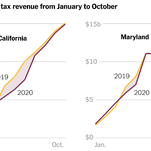Reopening a New York City school: ‘It’s been a tough start’
This fall New York City’s public schools faced perhaps their biggest challenge in memory: Could they resume in person safely? And for how long? We filmed in one school for 33 days to chronicle every step of the reopening. — NYT: Top





